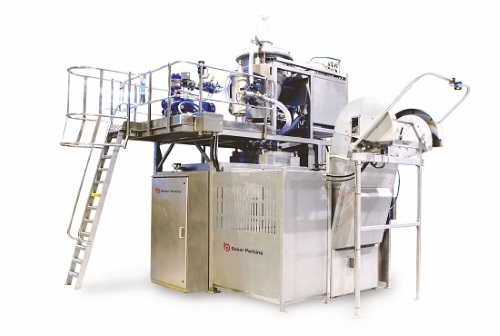Baker Perkins will showcase the Tweedy mixing systems at IBA in Munich, Germany from September 15 to 20, 2018.
The Tweedy SuperCool mixer has an enhanced bowl cooling with advanced control technology to provide precise management of dough temperature in any climate.
The technique features a re-designed cooling system that can significantly increase heat transfer from the dough to the cooling jacket during mixing.
The machine is suitable for high-output plant bakeries making tin and pan bread, burger buns, rolls and pizza bases, including the sour dough, liquid sponge and sponge and dough processes.
It can also be retrofitted to existing installed mixers.
The system is designed for use in hot climates including the Middle East, Latin America and Asia, where effective dough temperature control is a potential problem.
Mixer bowl cooling is very cost effective compared to the capital and energy costs of flour cooling equipment and air conditioning.
It can closely control final dough temperature regardless of variations in ingredient temperatures and energy levels.
Although bowl cooling has always been an option, it has not been sufficient to avoid measures such as adding ice to the mixing bowl when the ambient temperatures are high.
Baker Perkins’ software measures flour and ambient temperatures and relates them to energy requirement for the mixing process, then regulates incoming water temperature and applies jacket cooling to achieve the exact dough temperature required.
This creates complete control over final dough temperature, which is fundamental to efficient downstream handling.
Using the machine, bakers can have precise control of the dough structure and rapid mixing times maximising consistency and quality are retained.
Product costs are kept low by water absorption rates up to 75% and efficient development of the available protein which produces strong dough from lower protein flour.
Automated ingredient feeds and short mixing cycles minimise dead-time, while the design of the bowl and mixing tool – plus the speed of rotation – combine to produce a three dimensional mixing action that stretches and shears more of the dough for more of the time.
The result is rapid structural development, allowing up to 12 batches every hour.
Using the pressure/vacuum mixing controls, bakers can apply pressure at the start of mixing to trap more air in the dough, and apply vacuum towards the end of the cycle to control the size of the bubbles and refines the crumb structure.
The proportion of pressure and vacuum applied determines whether the dough texture is fine – for bagels, for example; or open – such as baguettes.
As these proportions are altered, it is easy to switch to a different product.











